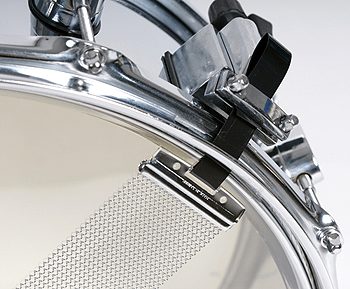Counting, on You
Episode #2 of the course How to play the drums to (almost) every song you’ve ever heard by Dylan DePice
Quick! What do you remember from yesterday? Counting to four. Spacing the numbers evenly. Adding + (“and”) after each one. And slapping your thigh when you say 2 and 4. Good memory!
In order to play along to a song, you need to know what’s happening in the music. And you already know more than you might think. Believe it or not, you already know how to count bars of four, you already know how to count 8th notes, and you already know when to play the snare drum. Don’t be intimidated by the lingo; you already know this stuff from yesterday. Let’s break it down:
Bars. When you’re counting your fours, you’re counting bars of four; each grouping of 1, 2, 3, 4 is a bar. They’re also called measures. This makes sense because you’re measuring the song. A “12-bar blues” means each chunk of that song is 12 bars long. Musicians who are playing the song all know that they need to count to four 12 times before switching to the next section of the song. “Wipeout” by the Surfaris (YouTube) is a great example of the 12-bar blues format, and it also happens to be a legendary drum song. I don’t suggest trying to count the measures yet; you may not be able to keep up or find your spot because it’s an adventurous beat and it’s played fast. But I do recommend listening to it because it’s awesome. (Also, now you know what rappers mean when they talk about “spitting bars.”)
8th Notes. Counting 8th notes just means counting eight notes in the space when you would otherwise count four. This is what you’re doing when you say, “1 + 2 + 3 + 4 +”; this puts eight notes in a “bar of four.” They’re called 8th notes because each one takes up exactly an eighth of the measure. When you just count four without the “ands,” you’re counting quarter notes; in that case, since every note is equally spaced, each takes up exactly a quarter of the bar. (Similarly, a whole note takes up the whole bar, a half note takes up half the bar, and on the other extreme, 16th notes take up one-sixteenth of a bar of four.)
Snare Drum. When you slap your thigh on 2 and 4, you’re playing a standard pop snare pattern. The sound of an actual snare drum cuts through more than any other drum. That’s because snare drums have metal wires tightly pressed against the bottom head of the drum. Here’s a look at the bottom of a snare drum:
Some songs like “We Will Rock You” by Queen (Spotify/YouTube) use clapping instead of a literal snare drum. Much of pop music today uses programmed clap or snap sounds, like “HUMBLE.” by Kendrick Lamar (Spotify/YouTube) or “I’m the One” by DJ Khaled (Spotify/YouTube). These other sounds still serve as the snare because they cut through more than anything else and land exactly on 2 and 4.
Tomorrow, we’ll get back into how to physically play our basic beat. In the meantime, keep practicing what you learned from Lesson #1: counting to four, spacing the numbers evenly, saying + (“and”) after each one, and slapping your thigh when you say 2 and 4.
Good memory.
Recommended book
Share with friends


